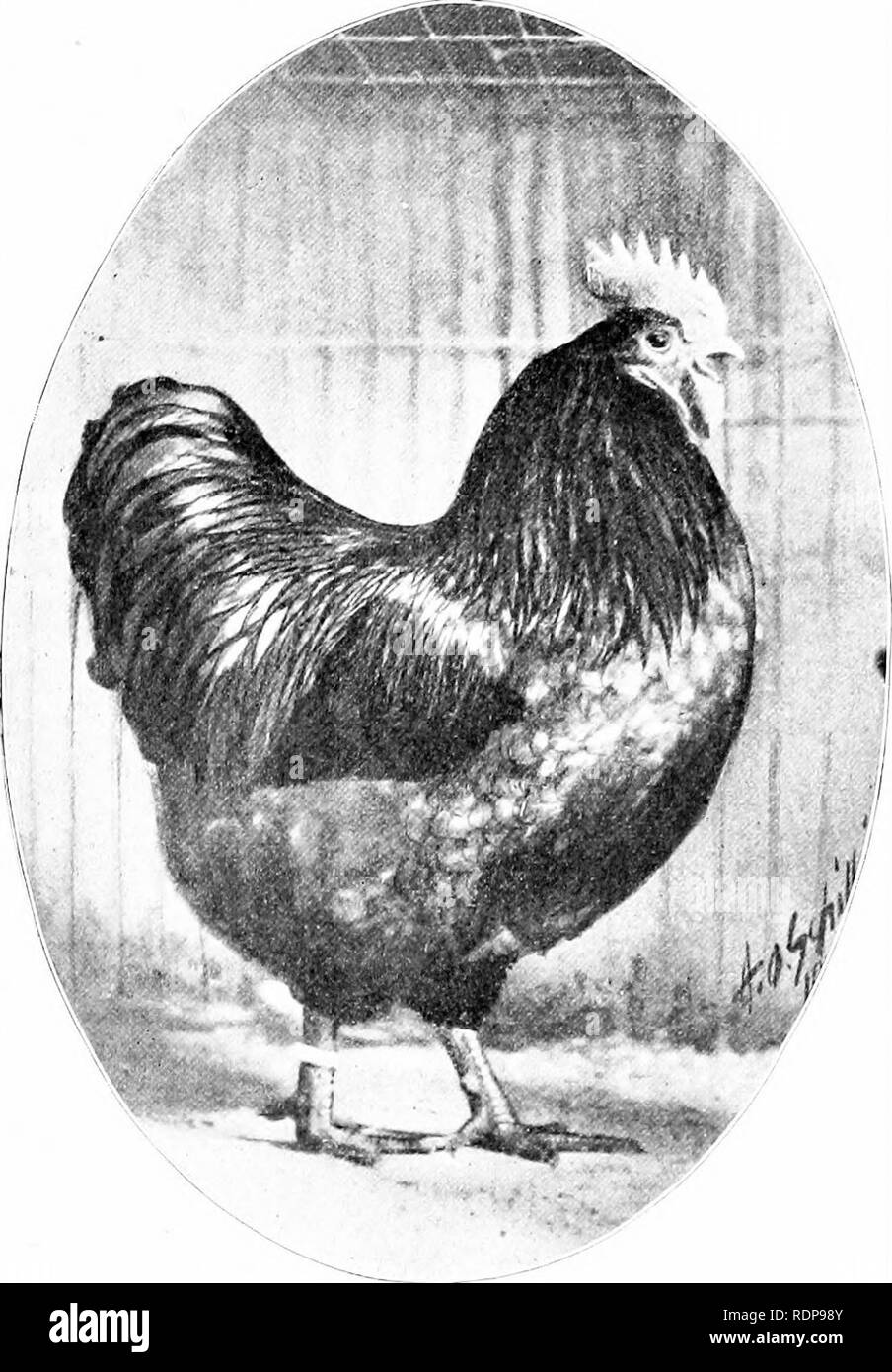. Standard-bred Orpingtons, black, buff and white, their practical qualities; the standard requirements; how to judge them; how to mate and breed for best results, with a chapter on new non-standard varieties. Orpington chicken. 11 THE ORPINGTONS ripportunity to judge which were the best pure breeds. I ha u found good layers of every breed, and I have never yet kept any breed of fowls some of which did not lay all through the winter months. In this way I proved that the laying powers of the fowls are not so much regulated by the breed as by the strain. I found that the Plymouth Rock stood at

Image details
Contributor:
The Book Worm / Alamy Stock PhotoImage ID:
RDP98YFile size:
7.2 MB (396.4 KB Compressed download)Releases:
Model - no | Property - noDo I need a release?Dimensions:
1319 x 1895 px | 22.3 x 32.1 cm | 8.8 x 12.6 inches | 150dpiMore information:
This image is a public domain image, which means either that copyright has expired in the image or the copyright holder has waived their copyright. Alamy charges you a fee for access to the high resolution copy of the image.
This image could have imperfections as it’s either historical or reportage.
. Standard-bred Orpingtons, black, buff and white, their practical qualities; the standard requirements; how to judge them; how to mate and breed for best results, with a chapter on new non-standard varieties. Orpington chicken. 11 THE ORPINGTONS ripportunity to judge which were the best pure breeds. I ha u found good layers of every breed, and I have never yet kept any breed of fowls some of which did not lay all through the winter months. In this way I proved that the laying powers of the fowls are not so much regulated by the breed as by the strain. I found that the Plymouth Rock stood at the head of the list, for laying and table qualities combined, for some years, but an idea occurred to me that I could improve even on this. I will mention (1) how I did it, and (2) why. I believed that a better all round fowl could be produced for laying and table pur- poses, which would at the same time suit the public. I found out, by visiting many exhibitions and poultry yards, that some liked the Minorca fowls, but that their white-shelled eggs and big combs, which so soon get frost-. BLACK ORPINGTON COCKEREL—ENGLISH-AMERICAN TYPE Picture shows first prize Blacli Orpington cockerel at Mad- ison Square Garden, December, 1908-January, 1909, as exhib- ited by Wm. Cook & Sons, Kent, England and Scotch Plains, New Jersey, U. S. A. The Cook Farm at Scotch Plains is in charge of Percy A. Cook, eldest son of the late Wm. Cook, principal originator and early promoter of all varieties of the Orpington fowls. bitten, were drawbacks to them. Then others fancied the Langshan, but did not like the feathers on their legs. Some had a fancy for the Black Rocks, but as they were only sports from the speckled, and not an established breed, they did not take as they otherwise would have done. I took this all in, and resolved that from these three useful breeds I could and would produce a bird to suit the public. I took the three breeds, and commenced mating Minorca cocks with Black Rock